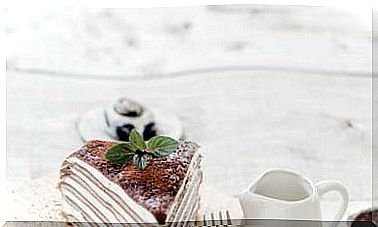Overcoming Insecurities Through Art
Through writing Gulliver’s Travels , Jonathan Swift turned his insecurities into art – into something fun, beautiful, and useful to others.

Jonathan Swift was abandoned as a child, and as an adult he suffered a divided existence : the intimate one, in which he was anxious about fatherhood, and the social one, in which he shone as a writer. From this oscillation his work was born and, transforming his complex into art, he integrated into society.
The author of Gulliver’s Travels was orphaned very early, since he lost his father in the first weeks of his mother’s pregnancy.
He was a fragile baby , immersed in the context of extreme poverty in 18th century Dublin. His nurse kidnapped him and eloped with him to England. His mother recovered him for some time, but abandoned him at the age of four.
We can think that the early traces did not stabilize in Jonathan a protective bond and that this affective difficulty was aggravated by the harshness of the Kilkeny and Trinity College boarding schools.
In a panic at an emotional bond situation, a bond to which he attributed excessive importance, he suffered throughout his life because of the “excremental vision” he had of himself.
It is therefore an adolescent divided in two who is thrown into the affective life and the social adventure. Terrified at the idea of marriage and parental responsibility, he ironically suggests in his Modeste proposition pour empêcher les enfants des pauvres d’Irlande d’être à la charge de leurs parents … (1729) [Modest proposition to prevent the children of the poor from from Ireland are a burden to their parents…] roast the children and serve them at the table of the rich.
From trauma, anguish and fear to resilience
The resilient part of his identity was generated by the effect of the attraction that the company of women and literature made him feel, in which he found an intellectual, political and religious adventure that invigorated him.
Sensitive to the suffering of others, he campaigned all his life in defense of children’s rights. He was among the first to call for women to receive the same education as men, to commit himself to religious tolerance, and to defend the Irish people and the beauty of the English language.
We can imagine that the resilient part of his personality, which socially reached a full development and was covered with honors and responsibilities, contrasted with his intimate, secret and painful life.
This divided personality was probably the result of the situation of constant emotional threats in which he had to develop.
He worshiped the Irish, literature, God, and women, but he was terrified at the thought of having to love a child. Was he perhaps terrified at the feeling of not being able to love him enough and make him as unhappy as he himself had been?
It happens that this feeling, which permeates the psychic life of those who adapt to an anguished threat by splitting, manifests itself in the course of their dreams with a typical scenario.
They see themselves in a box or in a room with bare walls. A ball rolls in the box and begins to grow while, at the same time, they get smaller and smaller. The inflated ball becomes unpredictable and the dreamer finds it increasingly difficult to avoid it and prevent it from being crushed.
He experiences a feeling of stupefaction when he suddenly begins to grow himself while the ball begins to get smaller. The moment the ball is bigger than the ball, the person experiences a feeling of relief, and later of euphoria, which ends up causing a vertigo of anxiety because of how big the dreaming person has become and how tiny it is now. the ball.
Jonathan Swift, the Masked Giant
This way of seeing the world, this appreciation of others, is literary staged in Gulliver’s Travels (1726).
In fact, the story serves as a psychological and social metaphor for a feeling of oscillation in which we experience the same anguish dominating it as seeing ourselves dominated by it. In this way, a chain of image representations is established that, placed in dreams during development, constitute the archetypes that structure our symbols.
Jonathan Swift, split by the affective disaster of his early childhood, feels a taste for the world that, at night, takes the form of an alternating dream. However, as soon as he wakes up, the future writer manifests his resilience by regaining control of his dream and conforming an oscillatory-looking story with it.
Through this active resistance, the wounded man becomes a useful creator for those close to him.
The intellectual and social power obtained in this way will be dedicated to them. Little Jonathan has just turned his wound into a work of art.
His inner world, damaged by affective disaster, metamorphoses into a beautiful, fun and socially useful outer world .
This is the way in which symbolization operates : “[…] civilizing the ghost through words and creative, artistic, scientific or other activities”.
This text is an excerpt:
- “To overcome oneself through art” (p. 190 to 192) in The ugly ducklings . © 2002 Editorial Gedisa, Barcelona.
- Original French title: Les vilains petits canards.
- Translation by Tomás Fernández Aúz and Beatriz Eguibar.
- Translation provided by Editorial Gedisa, SA









